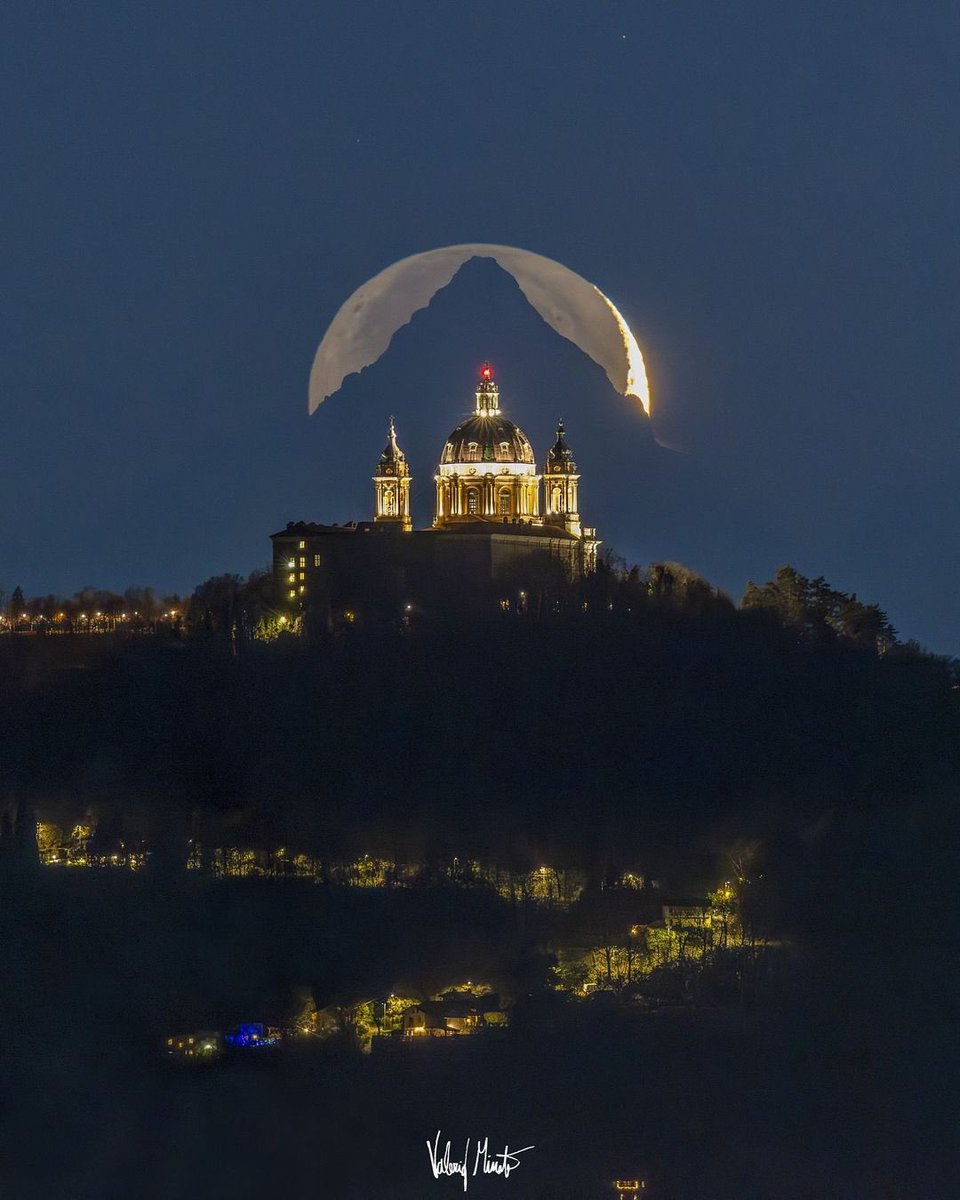The making of a masterpiece.
Crescent moon, Mount Monviso and Basilica of Superga captured in Turin by Valerio Minato (valeriominato -IG).
Crescent moon, Mount Monviso and Basilica of Superga captured in Turin by Valerio Minato (valeriominato -IG).
"Beauty is truth, truth beauty,—that is all ye know on earth, and all ye need to know."
Follow me for more posts like this: @JamesLucasIT
Follow me for more posts like this: @JamesLucasIT
Single shots like this require planning. The first step is to realize that such an amazing triple-alignment actually takes place. The second step is to find the best location to photograph it. But it was the third step: being there at exactly the right time -- and when the sky was clear -- that was the hardest. Five times over six years @ValerioMinato tried and found bad weather.
Finally, just ten days ago, the weather was perfect, and a photographic dream was realized. Taken in Piemonte, Italy, the cathedral in the foreground is the Basilica of Superga, the mountain in the middle is Monviso, and, well, you know which moon is in the background.
Here, even though the setting Moon was captured in a crescent phase, the exposure was long enough for doubly reflected Earthlight, called the da Vinci glow, to illuminate the entire top of the Moon. (NASA)
Finally, just ten days ago, the weather was perfect, and a photographic dream was realized. Taken in Piemonte, Italy, the cathedral in the foreground is the Basilica of Superga, the mountain in the middle is Monviso, and, well, you know which moon is in the background.
Here, even though the setting Moon was captured in a crescent phase, the exposure was long enough for doubly reflected Earthlight, called the da Vinci glow, to illuminate the entire top of the Moon. (NASA)

• • •
Missing some Tweet in this thread? You can try to
force a refresh















